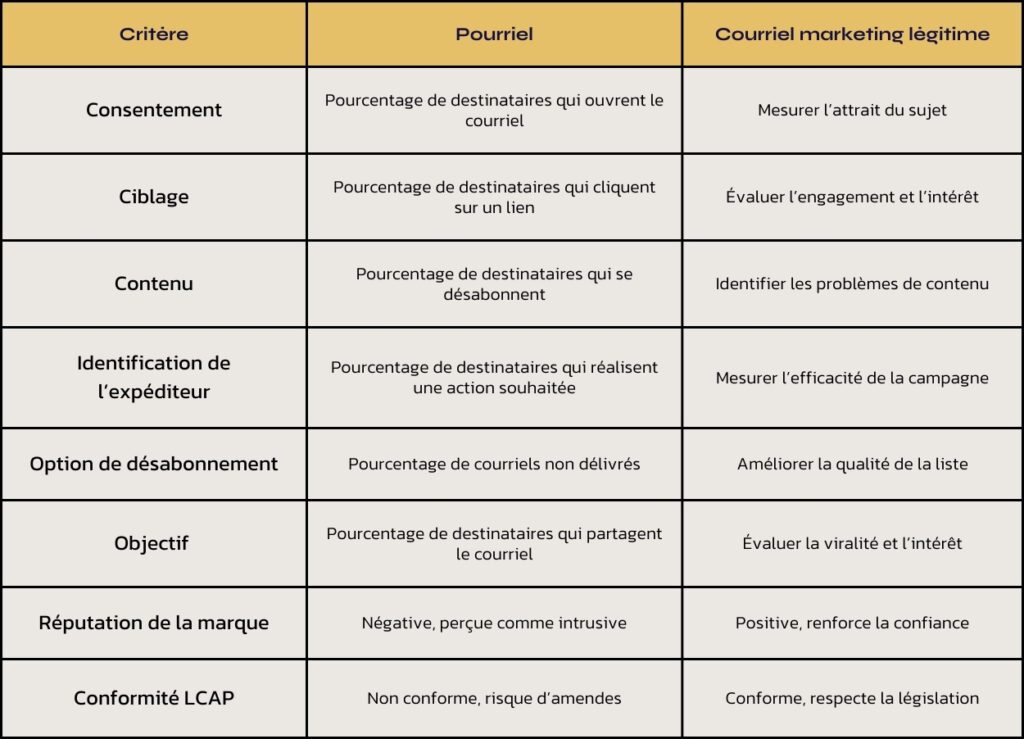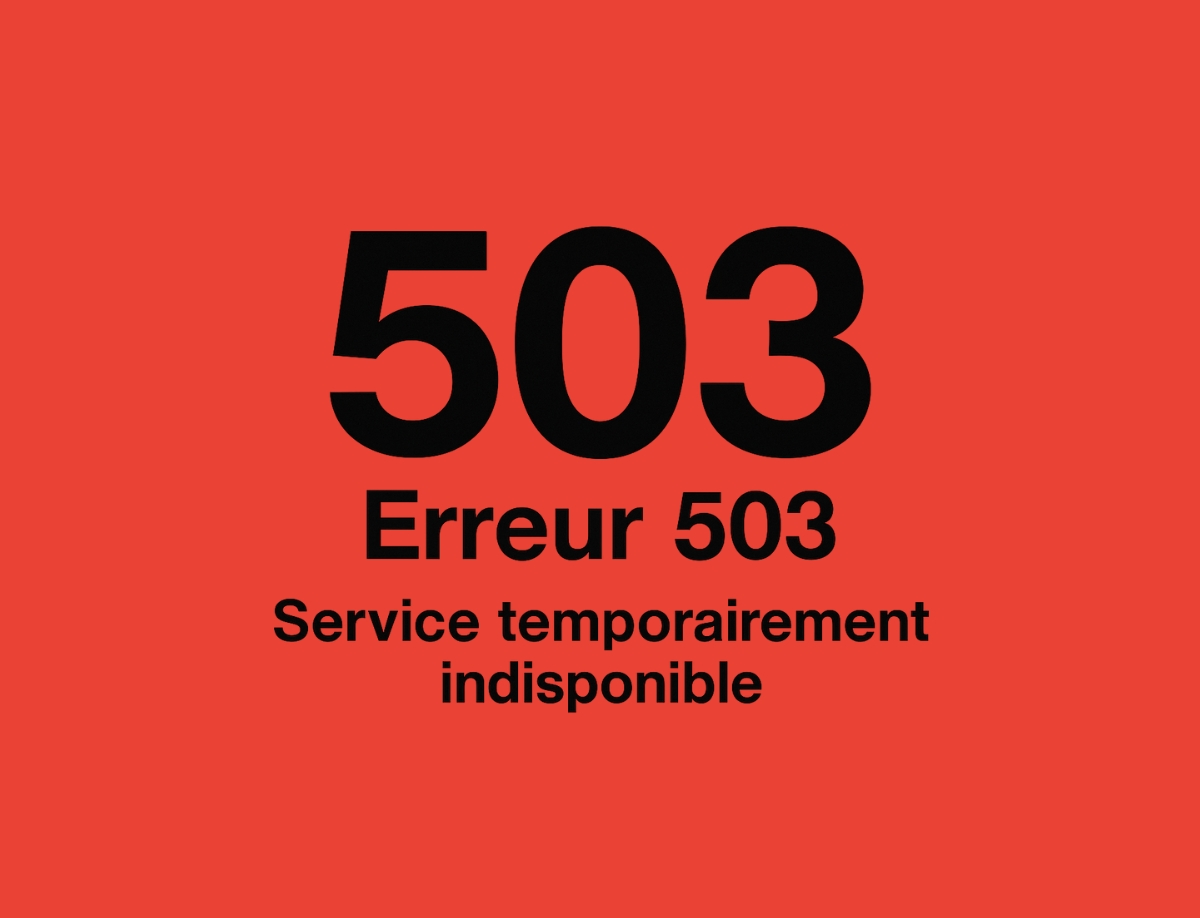Imagine opening your inbox every morning to find hundreds of unwanted e-mails. This is the daily life of spam, the scourge that clogs up not only your inbox, but those of many companies. These unsolicited messages can seriously damage your company's productivity and reputation. Fortunately, in Canada, the Canadian Anti-Spam Act (CASL) is there to regulate these practices and protect consumers.
In this article, we'll discuss what spam is, the requirements of the LCAP, and give you some practical tips for managing your e-mail campaigns while staying in compliance with the law.
1. What is Canada's Anti-Spam Legislation (CASL)?
Visit Canada's Anti-Spam Legislation, or LCAP, was put in place to combat spam in Canada. Since its introduction in 2014 and subsequent reinforcements, this law imposes strict rules on companies regarding the sending of commercial emails. The aim is clear: to protect consumers from unwanted emails, guarantee the confidentiality of personal data and promote ethical marketing practices. By complying with the LCAP, you not only avoid stiff fines, but also earn the trust of your customers.
1.1 LCAP principles
The LCAP aims to reduce the number of unsolicited e-mails and protect consumers. In concrete terms, this means that companies must obtain explicit consent before sending commercial e-mails. In addition, each e-mail must clearly identify the sender and offer an easy-to-use unsubscribe option. These rules are there to ensure that your communications respect your recipients' preferences.
1.2 Consent and deregistration
Under the LCAP, obtaining consent is paramount. This can be done in two ways: either by implied consent, based on an existing business relationship, or by explicit consent, obtained via voluntary registration. And remember, every e-mail must include a simple and effective way for recipients to unsubscribe from your mailing lists.
1.3 Penalties and fines
Penalties for non-compliance with the LCAP can be severe. Companies risk fines of up to several million dollars, depending on the severity and recurrence of the violations. These fines are intended to deter spamming practices and encourage respectful, ethical marketing methods.
2. Spam: Definition and Issues
2.1 What is spam?
Spam is the unsolicited e-mail we receive en masse. Whether it's dubious promotional offers, fraudulent links or even phishing attempts, these messages clog up your inboxes and can even jeopardize the security of your sensitive information. In short, it's electronic noise that can seriously disrupt your business.
2.2 The consequences of spam
Sending spam means taking huge risks. Not only could you be heavily penalized financially, but your reputation could take a big hit. Recipients see your company as intrusive or unprofessional, which can diminish their trust and loyalty. And that's not all: poor e-mail management can also affect the deliverability of your legitimate communications. In short, this is a situation to be avoided at all costs.
2.3 Spam vs. email marketing: The difference
It's super important to know the difference between spam and legitimate e-mail marketing.
Visit e-mail are sent to people who have explicitly consented to receive them.
On the other hand, the spam are sent without any prior consent, which is not only annoying but also illegal. This distinction is essential to maintaining good relations with your customers and avoiding costly penalties.

3. Manage compliant marketing emails
3.1 Obtaining consent
To avoid sending spam, it's crucial to obtain prior consent from your recipients. Use clear, transparent sign-up forms on your website, at events or via advertising campaigns. Make sure your users understand that they are subscribing to receive commercial communications. In addition, keep a precise record of the consents obtained to protect yourself in the event of an audit.
3.2 Personalization and relevance
Sending personalized, relevant e-mails keeps your recipients interested. Segment your mailing list according to interests, behaviors and demographics. Targeted emails are more likely to engage your recipients and reduce unsubscribes. For example, propose special offers based on previous purchases or stated customer preferences.
3.3 Frequency of dispatch
Be careful not to bombard your subscribers with too many e-mails, which could be perceived as spam. Determine a mailing frequency suited to your audience and stick to it. Let your subscribers know how often they will receive e-mails when they sign up. Regular but non-intrusive communication helps maintain engagement without irritating your recipients.
3.4 Quality content
Always include valuable content in your e-mails. Whether it's to inform, educate or entertain your recipients, good content keeps them interested. Well-written, relevant emails increase open and click-through rates, while strengthening the relationship with your customers. Remember to use attractive visuals, clear calls to action and useful information to capture attention.
3.5 Unsubscribe option
Offering an unsubscribe option is crucial to complying with the LCAP and maintaining a positive relationship with your customers. This option must be simple to find and use, allowing recipients to easily remove themselves from your mailing lists. By making it easy to unsubscribe, you demonstrate your respect for your customers' preferences and avoid frustrating them with unwanted e-mails.

4. Tools and best practices for avoiding spam
4.1 Using e-mail management tools
Use e-mail management platforms that comply with LCAP standards. These tools offer features such as subscription management, unsubscribe tracking and campaign performance analysis. They also help automate processes and ensure compliance. Tools such as Mailchimp, SendinBlue or HubSpot can be particularly useful.
4.2 Checking the mailing list
Clean up your mailing list regularly to eliminate inactive or incorrect addresses. A clean mailing list reduces the risk of bounces and improves the deliverability of your e-mails. What's more, it shows that you respect your recipients' preferences. A well-maintained list also enables you to target your campaigns more effectively.
4.3 E-mail authentication
Implement e-mail authentication protocols such as SPF, DKIM and DMARC. These measures help prevent spoofing and ensure that your e-mails are not flagged as spam by e-mail providers. Good authentication also reinforces recipients' trust in your communications.
4.4 Monitoring and analysis
Monitor the performance of your e-mail campaigns by tracking open, click and unsubscribe rates. Analyze this data to identify trends and adjust your strategies accordingly. Ongoing monitoring helps improve the effectiveness of your campaigns and minimize the risk of non-compliance. For example, if you notice a high churn rate, re-evaluate the content or frequency of your mailings.
5. Impact of the LCAP on e-mail marketing
Canada's Anti-Spam Legislation (CASL) has profoundly transformed e-mail marketing. By imposing more respectful practices, the Act has not only improved the quality of customer interactions, but also strengthened the trust and effectiveness of e-mail marketing campaigns.
5.1 Adapting email marketing strategies
Thanks to the LCAP, companies have had to rethink their e-mail marketing strategies. They are now adopting more respectful, personalized approaches by :
- Obtaining informed consent Each recipient must explicitly agree to receive commercial e-mails.
- Personalizing messages Use customer data to send relevant e-mails, such as offers based on previous purchases.
- Segmenting audiences Divide mailing lists according to specific criteria to better target messages.
These practices increase email relevance, improve engagement rates and reduce unsubscribes.
5.2 The importance of trust in e-mail marketing
Complying with the LCAP considerably strengthens consumer confidence in your company. Indeed, transparent and respectful communication demonstrates that you value your customers' privacy and preferences. This translates into :
- Customer loyalty Respect: Respected customers are more likely to remain loyal and return for future purchases.
- Positive recommendations Good e-mail management encourages people to recommend your company to others.
- Reducing churn By sending relevant e-mails and respecting recipients' preferences, you minimize the risk of unsubscribing.
What's more, a good reputation for email management can attract new customers and partners, broadening your market reach.
5.3 Responsible marketing opportunities thanks to the LCAP
LCAP compliance opens up new opportunities to develop responsible and ethical marketing strategies. With a focus on :
- Effective campaigns Well-targeted, relevant e-mails have better open and click-through rates, which translates into higher conversions.
- A stronger brand image Adopting responsible practices improves your brand's image, making it more attractive and trustworthy in the eyes of consumers.
- Greater commitment : Offering quality content and respecting customer preferences increases customer satisfaction and strengthens customer relations.
For example, sending informative newsletters or personalized offers shows that you value your customers and reinforces their commitment.
Conclusion - Avoiding spam
Understanding spam and complying with Canada's Anti-Spam Act is essential for any company using e-mail marketing. By avoiding spam practices and adopting respectful strategies, you're not only protecting your business from legal sanctions, you're also building customer trust and loyalty. What's more, effective e-mail management enhances your brand reputation and optimizes your marketing campaigns.
At The WebixWe're here to help you set up effective, compliant e-mail campaigns, ensuring the success and longevity of your digital marketing.








